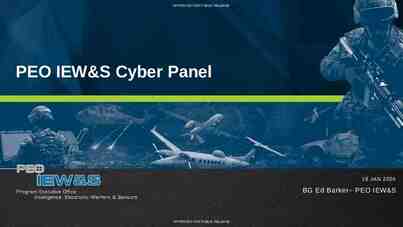NOMADIC EMPIRES & EURASIAN INTEGRATION CH. 17
22 Slides3.31 MB
NOMADIC EMPIRES & EURASIAN INTEGRATION CH. 17
TURKISH MIGRATIONS & IMPERIAL EXPANSION
ECONOMY AND SOCIETY OF NOMADIC PASTORALISM Nomadic Pastoralists and their animals - Herds of animals - adapted to ecological conditions -followed migratory cycles that took account of seasons and local climate climate limited development of human society - produced limited pottery, leather goods, iron weapons, and Nomadic and Settled Peoples - traded w/settled peoples - agriculture and manufactured goods - linked societies from China to Mediterranean Basin Nomadic Society - two social classes: nobles & commoners - nobles: charismatic leaders, clans & tribes into alliances, fluid class -commoners: gain recognition and move up
ECONOMY AND SOCIETY OF NOMADIC PASTORALISM Gender Relations Nomadic Religion - adult males dominated - women: tended to animals, excellent horse riders & archers - Turkish religion revolved around shaman-religious specialist (supernatural powers) -6th century many Turks converted to Buddhism, Christianity, or Manicheism Turkish Conversion to Islam - 10th century large scale conversion; esp. Turks Military Organization - Khans (rulers), indirectly through leaders of allied tribes - superior equestrian skills - these skills helped to attack settle communities of wealth
1. Nomadic pastoral peoples organized their societies along lines very different from their counterparts in settled agricultural societies. To what extent did the natural environment and the demands of a pastoral economy influence social organization on the Eurasian steppe lands?
TURKISH EMPIRES IN PERSIA, ANATOLIA AND INDIA Saljuq Turks and the Abbasid Empire - opportunities for trade - along borders of Abbasid realm at times served in Abbasid army - 11th c. overpower caliphs, who become figureheads Saljuq Turks and the Byzantine Empire - migrating in Anatolia 11th c. - peasants viewed them as liberators - displaced Byzantine authorities, set up own political and social institutions - discriminated against the Byzantine Empire - welcomed converts to Ghaznavid Turks and the Sultanate of Delhi - led raids in lucrative sites of N. India - goal at first was to plunder later more interested in permanent rule - foe of Buddhism and Hinduism, destroyed many sacred temples, shrines, monastaries - encouraged conversion to Islam
THE MONGOL EMPIRE
CHINNGIS KHAN AND THE MAKING OF THE MONGOL EMPIRE Chinggis Khan’s Rise to Power - Unifier of the Mongols originally named Temujin - alliance w/Mongol clan leader, steppe diplomacy (loyalty but betrayal through advancement) - brought all Mongol tribes into a single confederation Mongol Political Organization - mistrusted Mongol tribal organization - had military pledge allegiance to him alone, no tribal affiliation - most important part of the empire was the army Mongol Army - relied on equestrian skills and archery - after united all Mongols turned his attention to Central Asian conquests
CHINNGIS KHAN AND THE MAKING OF THE MONGOL EMPIRE Mongol Conquest of N. China - extended Mongol rule to Northern China, dominance by 1220 Mongol Conquest of Persia - ruled by Saljuqs known as the Khwarazm shah - despised Mongols ordered them to assassinate Chinggis Khan, unsuccessful - Chinggis retaliated and took control of his army and his realm - destroyed qanat irrigation system - no establish central gov’t, assigned overlords for administration.
2. In what ways do the military practices described by Marco Polo reflect the influence of the steppe environment on the Mongols?
THE MONGOL EMPIRE AFTER CHINGGIS KHAN Khubilai Khan - after Chinggis death there was a power struggle, divided empire into 4 regional realms amongst grandsons. - Consolidated China - ruthless attacks against enemies, improved welfare Mongol Conquest of Southern China - Kubilai in 1279 est. Yuan Dynasty till 1368 - attempted several invasions in SE Asia but was unsuccessful The Golden Horde -1237-1241 -maintained a large army -extracted tribute from Russian cities and agricultural production, did not find the land appealing The llkhanate of Persia -Khubilai’s brother Hulegu defeated Abbasid empire and started the Mongol’s ilkhanate in Persia. - needed to become governors as well as conquerors - difficult adjustment as administrator - could not
3. What role did catapults play in sieges like the one above?
THE MONGOL EMPIRE AFTER CHINGGIS KHAN Mongol Rule in China - Mongols in China frowned upon their subjects, they were mere cultivators - outlawed marriages, forbade them from learning the Mongol languages, resisted assimilation to Chinese cultures, dismantled Confucian educational end exam system. - did not do their own administrations but rather brought in others Mongols and Buddhism - Most Mongols followed native shamans - Others followed Lamaist Buddhism similar to their original beliefs - Lamaist- made room for magic & super-natural, recognized Mongols as legitimate rulers, and Mongol khans as incarnations of the Buddha
4.
MONGOLS AND EURASIAN INTEGRATION The Mongols and Trade - linked lands more directly - maintained a good courier network relaying news, information, & gov’t orders - encouragement of travel and communication facilitated trade, diplomatic travel, missionary efforts and people to new lands - safe trade routes allowed for more merchants to travel allowing for more commercial investment Diplomatic Missions - diplomatic communication was essential, security of roads and travelers benefitted ambassadors as well as merchants. Missionary Effects - highways for missionaries as well as merchants (Islam, Lamaist Buddhism, Nestorian Christians, Roman Catholics) Resettlement - moving people into new lands - often recruited specialized workers from their allies and placed them in areas among the empire where they were needed. - Uigher Turks often used for their intellect - often conquered people who were specialized were integrated into the empire - this promoted Eurasian integration and exchanges
5. In what ways did Mongol empires and Mongol policies facilitate trade, travel and communication throughout Eurasia?
DECLINE OF THE MONGOLS IN PERSIA AND CHINA Collapse of the Ilkhanate - Persia excessive spending of treasury, overexploitation of peasantry reduced revenue - Paper money attempt drive metals to gov’t unsuccessful merchants closed shops -Gov’t struggles Decline of the Yuan Dynasty - did not have reserves to back up paper money populatio n lost confidence prices rises to reflect diminished value - internal fighting (power struggles, assassinations, Bubonic Plague -facilitating trade and communication unknowingly spread the disease - SW China China & C. Asia SW Asia & Europe - depopulation in China and labor shortages weakened the Mongol regime Surviving Mongol Khanates -facilitating trade and communication unknowingly spread the disease - SW China China & C. Asia SW Asia & Europe - depopulation in China and labor shortages weakened the
AFTER THE MONGOLS
TAMERLANE THE WHIRLWIND The Lame Conqueror Tamerlane’s Conquest - the end of the Mongols created a political vacuum. -Ming took over China - Turkish Timur aka Tamerlame took over Persia - Modeled himself after Chinggis Khan, steppe - Places invaded and used for taxes include: Persia, Afghanistan, Golden Horde, India, attempts in Asia & Anatolia, tried for China but died before it could be accomplished in 1405 - Like others he was a conqueror not a ruler, no real administration, only tribal leaders were Tamerlane’s heirs - no organization meant conflicts between sons and grandsons. -territory divided into four parts
THE FOUNDATION OF THE OTTOMAN EMPIRE Osman -after the Mongols collapsed nomadic people moved into territories of Anatolia. - Series of campaigns of conquest emerged one of its leaders was Osman -1299 he declares independence from the Saljuq sultans and begins to create his own state - His followers begin to be called Ottomans Ottoman Conquests - Places of Ottoman spread and conquest include: Dardanelles at Gallipoli on the Balkan peninsula and into the Byzantine Empire The Capture of Constantinople - captured by Sultan Mehmed II, aka “Mehmed the Conqueror” - changed name to Istanbul, absorbed rest of Byzantine empire including Greece and the Balkan region as far as SW Asia, SE
6. To what extent do you think the cities and administrative infrastructure of the region both helped and hindered Tamerlane’s efforts to control his empire?
7. How do you think the capturing of Constantinople, which would lead to the end of the Byzantine empire, would effect the surrounding



























